The Regency Style: When France breaks free from Versailles
This silent but decisive revolution transforms our conception of French elegance. The first Régence curves already outline the future of rococo, while the last Louis XIV symmetries testify to a still-present past.
The Regency style “Régence” in french, revolutionizes Western art by marking the transition between Louis XIV’s grandeur and rococo grace. This period of aesthetic liberation reflects the emancipation of French society after the death “Le Roi Soleil” ( the Sun King) : from Versailles constraint to Parisian freedom, from imposed magnificence to chosen refinement. The French Régence invents an art of living that reconciles inherited grandeur with emerging modernity.
Régence: the creative explosion of liberation
This brief but extraordinary period, marked by eight years of innovation and aesthetic renewal, definitively transforms French art and heralds the decorative revolutions of the 18th century.
Decisive chronology:
• 1715-1723: Regency of Philippe d’Orléans (8 years)
• 1715: Return of the court to Paris – revolution in lifestyles
• European influence: French inspiration, emancipation of courts
The revolution of freedom
This era upends all the codes of Versailles decorative art. The artist-creator breaks free from royal protocol, while Parisian aristocracy becomes the prescriber of emerging European taste.
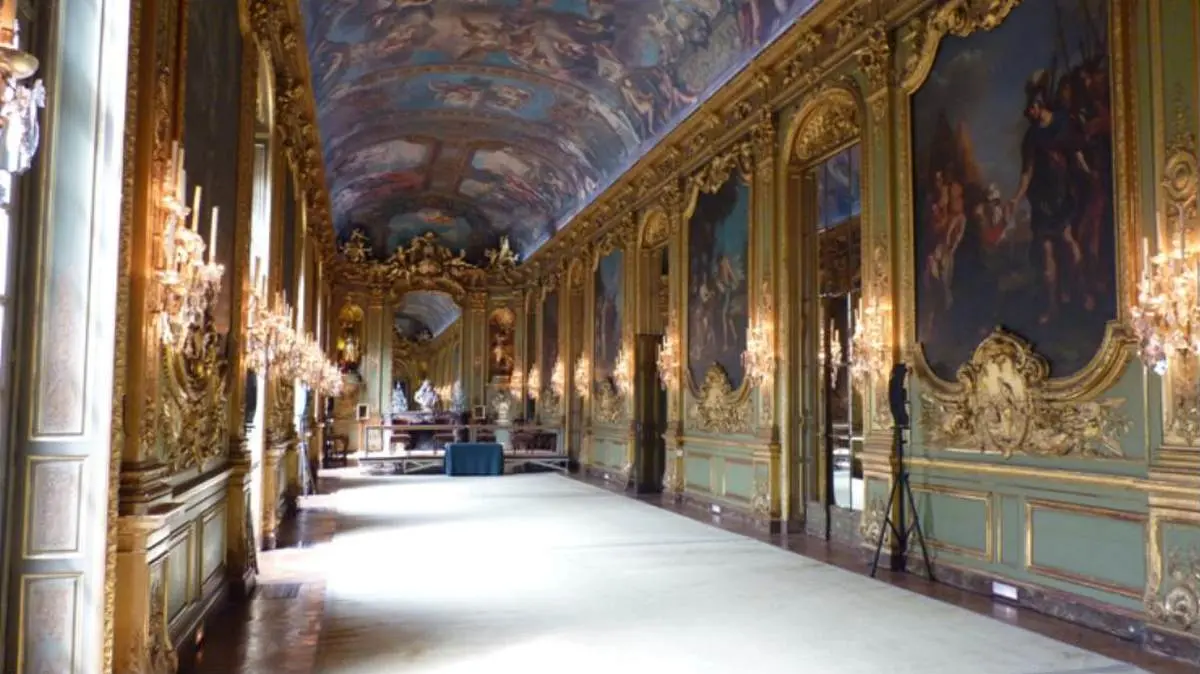
Charles Cressent, Robert de Cotte, Germain Boffrand embody this creative revolution that definitively transforms Western art.
The emergence of Parisian society revolutionizes lifestyles. Theater, opera, conversation inspire an art that celebrates refined sociability and modern domestic harmony.
This social transformation generates an unprecedented aesthetic that still influences our contemporary vision of French luxury and the art of entertaining.
Revolution of form and softening
It is now the emancipated master cabinetmakers who invent modern aesthetics, replacing Louis XIV rigidity with visionaries of decorative softening.
This era invents the revolutionary alliance between tradition and innovation, grandeur and intimacy, democratizing the aristocratic art of living.
Régence aesthetics abolish the boundary between display and comfort: first curves, lightened bronzes, softened symmetries testify to emerging modernity.
Arts: the “avant-garde” of transition
Liberated Paris, laboratory of taste
Parisian decorative art of the 1715-1720 years synthesizes the Louis XIV heritage and emerging rococo innovations in a style of remarkable transitional coherence.
Charles Cressent (master of transitional cabinetmaking), Robert de Cotte (architect of modernity), Germain Boffrand (visionary decorator) define this new aesthetic.
Claude III Audran revolutionizes ornamentation, Antoine Watteau transforms decorative art, while Jean Bérain the Younger explores new ornamental possibilities.
The renaissance of parisian art crafts
The Régence style spectacularly revitalizes all French art crafts by liberating them from Versailles constraint and orienting them toward Parisian innovation.
Charles Cressent (virtuoso of cabinetmaking without crosspiece), André-Charles Boulle (evolving master), Pierre II Migeon (innovator of forms) reinvent their art.
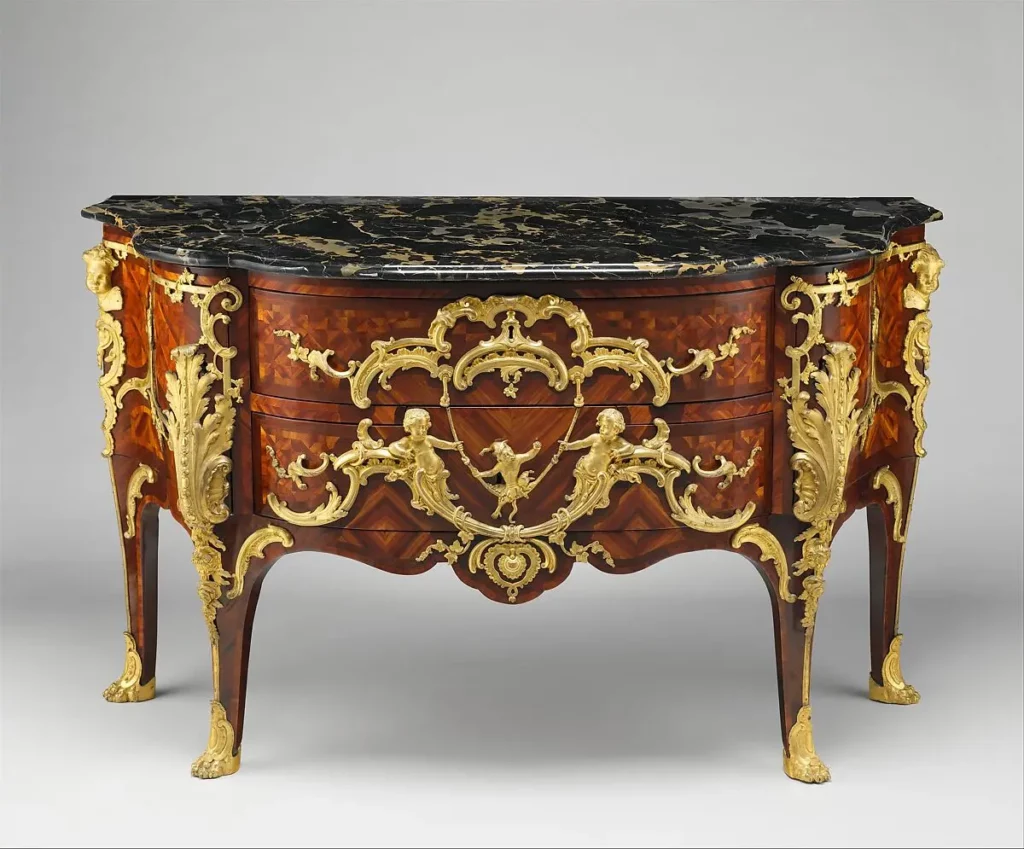
Bronze-making workshops modernize with Jacques and Philippe Caffieri who create an ornamental language of new delicacy.
Silversmithing reaches new heights with Claude Ballin the Younger and Thomas Germain, while royal manufactories adapt to new Parisian tastes.
Tapestry is revolutionized with the Gobelins under Robert de Cotte who develop a decorative language of measured modernity.
Régence Architecture: Manifesto of Modernity
The Parisian Townhouse as Innovation: Laboratory of Comfort
The Founding Event: The Parisian private mansion transforms architecture into a manifesto of modern post-Versailles art of living.
This revolution imposes new architectural canons: functional distributions, reception apartments, revolutionary intimate salons.

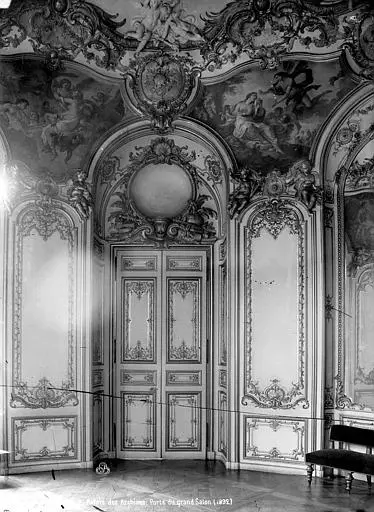
Permanent achievements (renovated Palais-Royal, Hôtel de Toulouse, completed Place Vendôme) definitively inscribe Parisian modernity in the French landscape.
This aesthetic revolution transforms France’s international image and influences emerging European architecture.
The Masters of French Architecture
Architect Robert de Cotte, creator of transitional architecture, develops a palatial aesthetic that influences all modern European architecture.
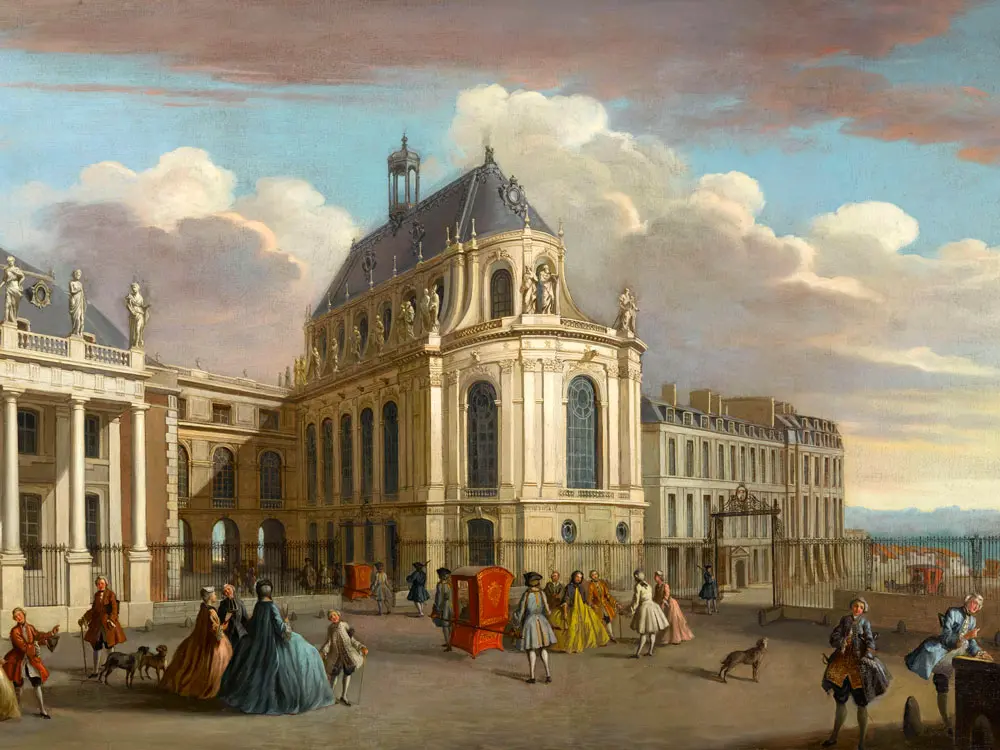
Germain Boffrand (innovator of rococo decoration), Pierre-Alexis Delamair (master of the Parisian townhouse), Jean Courtonne (precursor of comfort) embody this French avant-garde.
This architectural school, celebrated internationally, establishes the foundations of Parisian art of living and inspires European capitals.
It revolutionizes our conception of modern aristocratic habitat and durably imposes French elegance as a European aesthetic reference.
Total decorative art
The Régence style invents the concept of transitional art of living where architecture, furniture, art objects, and textiles form a harmonious ensemble serving modern aristocratic comfort.
Creators Charles Cressent, Robert de Cotte, Germain Boffrand develop the art of transitional decorative synthesis.
The synthesis of arts
The Régence style codifies a new decorative vocabulary that heralds rococo: emerging asymmetries, elegant chinoiserie, graceful singeries.
Antoine Watteau (master of gallant painting), Claude III Audran (virtuoso of ornamentation) revolutionize applied arts through their poetic innovations.
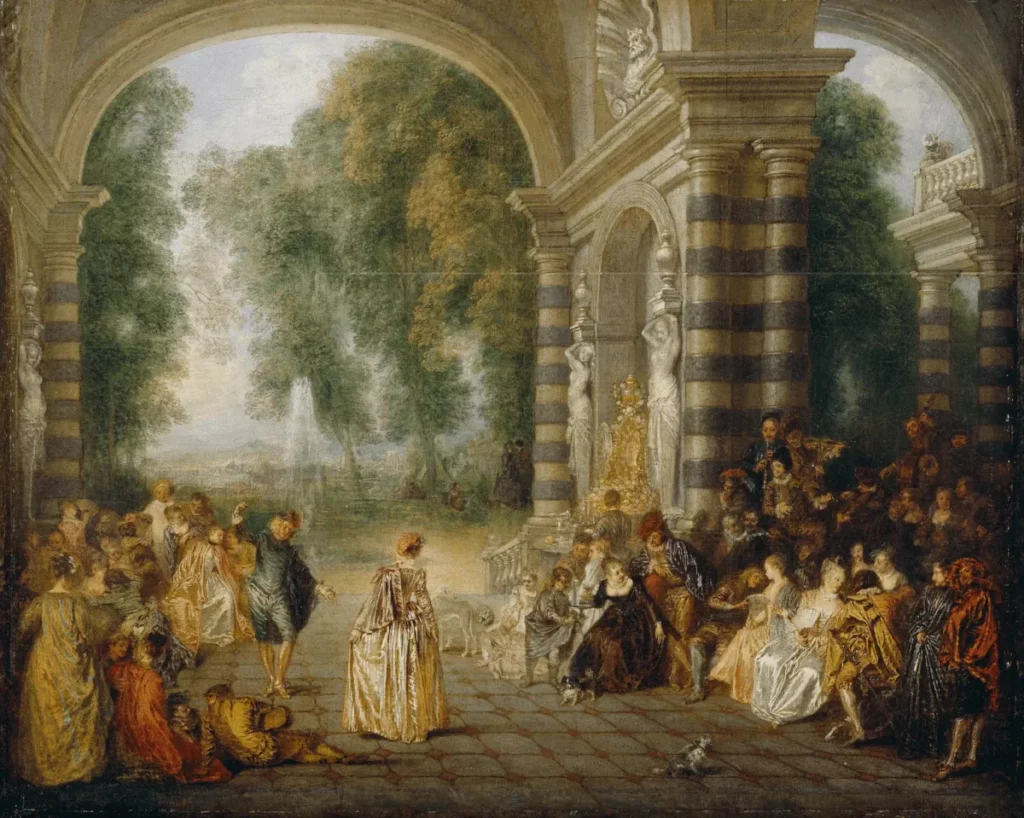
The influence of Far Eastern art and French tradition introduces a refined exoticism that renews European inspiration.
The furniture arts are reborn with the bronze-makers Caffieri, the cabinetmakers of Faubourg Saint-Antoine, creators of objects of transitional refinement.
Porcelain finds new breath with the first creations of Chantilly which develop a table art of new delicacy.
The workshops of Charles Cressent (revolutionary cabinetmaking), Jacques Caffieri (furniture bronzes), Thomas Germain (modernized silversmithing) establish new European standards.
Cressent’s furnishings, Caffieri’s bronzes, evolved silks create an art of living of transitional sophistication.
Softened symmetry, lightened materials, elegant functionality characterize this aesthetic of aristocratic modernity.
The Regent’s apartments at the Palais-Royal, decorated by Claude III Audran, perfectly embody this decorative revolution where French art meets daily Parisian freedom.
 Regent’s Apartments, Palais-Royal, Claude III Audran, 1717
Regent’s Apartments, Palais-Royal, Claude III Audran, 1717
Régence fabrics: the art of transitional textiles
Materials and Textures: The Revolution of Lightening
The Régence style revolutionizes textile art by favoring lightening of materials and chromatic delicacy. French manufactories develop new techniques that transform textiles into decorative elements that are freer and more graceful.
Lightened Lyon silks: Lyon silks evolve toward more supple patterns and less monumental effects than under Louis XIV. Brocaded silks integrate more delicate motifs to create more refined shimmering effects.
Softened damasks: Damasks develop less rigid patterns that herald future rococo arabesques, creating decorative effects of new suppleness.
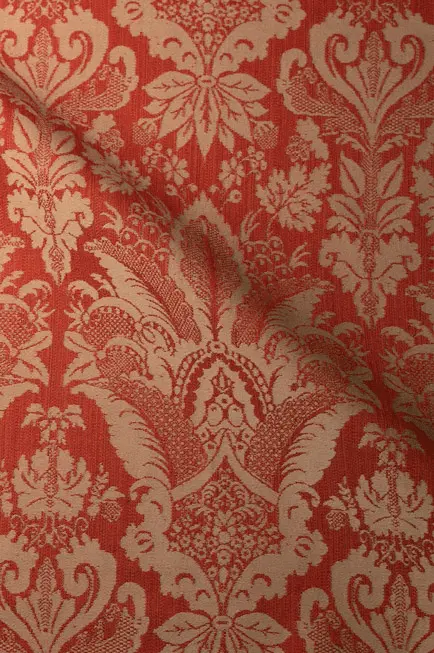

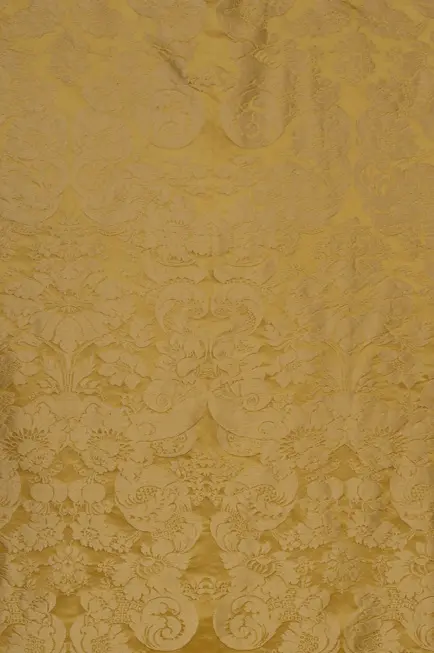
Changeable taffetas: A Régence innovation, taffetas with iridescent effects offer mobile reflections that harmonize with the first rococo bronzes.
Embroidered canvases: Passé embroidery and appliqués develop, introducing a tactile richness that renews textile ornamentation.
Color palette: the invention of transitional colors
The Régence color revolution creates an intermediate palette that heralds future rococo innovations while retaining Louis XIV richness.
Signature colors:
- Régence Blue: Deep blue but less intense than royal blue, first evolution toward rococo blues
- Carmine red: Red less brilliant than Louis XIV red, heralding future pinks
- Emerging celadon green: First Chinese influences in the French palette
- Pale gold: Gilding less bright, more powdery, heralding the evolution of taste
Sophisticated harmonies: Régence color associations favor softened contrasts: blue and gold, red and silver, green and bronze create atmospheres of transitional elegance.
Motifs and iconography: the transitional vocabulary
Régence textile ornamentation develops an iconographic repertoire that heralds rococo while retaining Louis XIV references.
Evolving motifs:
- Softened palmettes: Louis XIV palmettes round and lose their rigidity
- First shells: Appearance of shell motifs that will dominate rococo
- Elegant chinoiserie: Pagodas, dragons, exotic flowers treated with delicacy
- Graceful singeries: Costumed monkeys, a typically Régence motif popularized by Watteau
New scenes:
- Emerging fêtes galantes: First scenes inspired by Watteau
- Delicate pastoral scenes: Aristocratic pastoral that heralds Boucher
- Refined turqueries: Ottoman influence in French ornamentation
 Régence figured silk, transitional motifs, circa 1720
Régence figured silk, transitional motifs, circa 1720
Furniture applications: transitional specificities
Seating and upholstery: Gobelins tapestries evolve toward less monumental compositions with more delicate colors. Seats adopt specific fabrics that herald the evolution of taste:
- Emerging bergères: First plain silks in powdery colors
- Caquetoire chairs: Tapestries with delicate Chinese motifs
- Transitional sofas: Softened damasks or less sumptuous velvets
Hangings and curtains: Wall hangings lighten and favor decorative effects over monumentality. Lyon silks create more intimate effects with their new patterns.
- Window curtains: Changeable taffetas with subtle reflections
- Door hangings: Lighter damasks, first rococo braids
- Bed canopy: Figured silks with Chinese motifs or singeries
Cushions and furnishings: The art of passementerie evolves toward freer creations:
- Transitional braids: Softened geometric motifs
- Lightened fringes: Ornaments less massive, more graceful
- Embroidered cords: Decorative elements with exotic motifs
Techniques and craftsmanship: french evolution
Evolving weaving: Lyon looms adapt to new tastes allowing more varied effects:
- Delicate lampas: Refined technique for more subtle reliefs
- Brocatelle: Régence textile innovation, between brocade and damask
- Siamoise: Striped canvas imported from the Orient, great novelty
Dyes and colors: French master dyers develop new nuances:
- Refined cochineal carmine: More delicate reds
- Nuanced indigo: Mastery of new intermediate blues
- Toulouse pastel: Tender blues specifically French
 Gobelins tapestry after Audran, “Singeries”, circa 1720
Gobelins tapestry after Audran, “Singeries”, circa 1720
Evolution and unfluences: toward Rococo
From 1720, Régence textiles evolve rapidly under the influence of emerging rococo taste:
- Softening of motifs: Progressive abandonment of symmetry
- Reinforced Chinese inspiration: Multiplication of exotic motifs
- Softer colors: Direct anticipation of the Louis XV palette
This textile evolution accompanies the rapid transformation of taste that leads directly to the Louis XV style, testifying to the exceptional adaptability of French industry and the truly transitional character of this unique period.
Régence furniture: the invention of modern comfort
Material revolution: The Régence style progressively transforms the use of materials by favoring decorative lightening and emerging grace in transitional syntheses.
This revolutionary approach creates an aesthetic of transitional refinement that directly influences rococo furniture.
Creators favor precious woods (rosewood, palisander, lightened ebony) for their chromatic beauty, sublimated by less massive marquetry.
The art of marquetry evolves to new heights: softened geometric marquetry, first curves, Chinese motifs create decorative effects of transitional delicacy.
The major innovation lies in the harmonious integration of new techniques: lightened bronzes, powdery gilding, softened structures revolutionize furniture aesthetics.
Formal revolution: Régence furniture invents modern aristocratic comfort by reconciling inherited grandeur and refined functionality.
This innovative approach revolutionizes the art of furniture and establishes the direct foundations of rococo design.
Inspiration draws from international art: Chinese influence, French tradition, Ottoman art nourish a cosmopolitan Parisian creativity.
Ergonomic and aesthetic research enriches this vocabulary: comfort studies, psychology of intimacy, art of conversation inspire a hedonistic aristocratic aesthetic.
The ingenuity of master cabinetmakers develops a furniture typology of transitional refinement, adapted to the new uses of liberated Parisian society.
Régence interiors are characterized by their sophisticated grace and functional comfort, directly prefiguring rococo conceptions.
Emerging asymmetry and the use of lightened materials create an aesthetic of French refinement accessible to European elites.
Typology of Régence furniture: the transitional art of living
Seating: Revolution of Aristocratic Comfort
Régence seating revolutionizes the art of sitting by reconciling softened protocol and new decorative beauty in creations of transitional formal grace.
The adoption of slightly rounded forms and lightened materials progressively transforms the French tradition of seating.
Decorative innovation harmoniously integrates softened sculptures, fluting and powdery gilding in compositions of new delicacy.
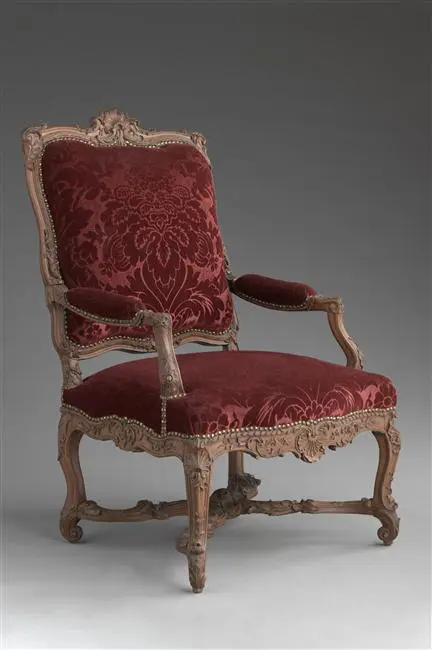
Salon armchairs adopt more enveloping volumes and less rigid ornaments of exceptional comfort.
Society seating diversifies with specialized creations that accompany the new uses of Parisian sociability.
Chaises and fauteuils à la Reine develop a decorative repertoire of transitional richness, often inspired by Chinese research.
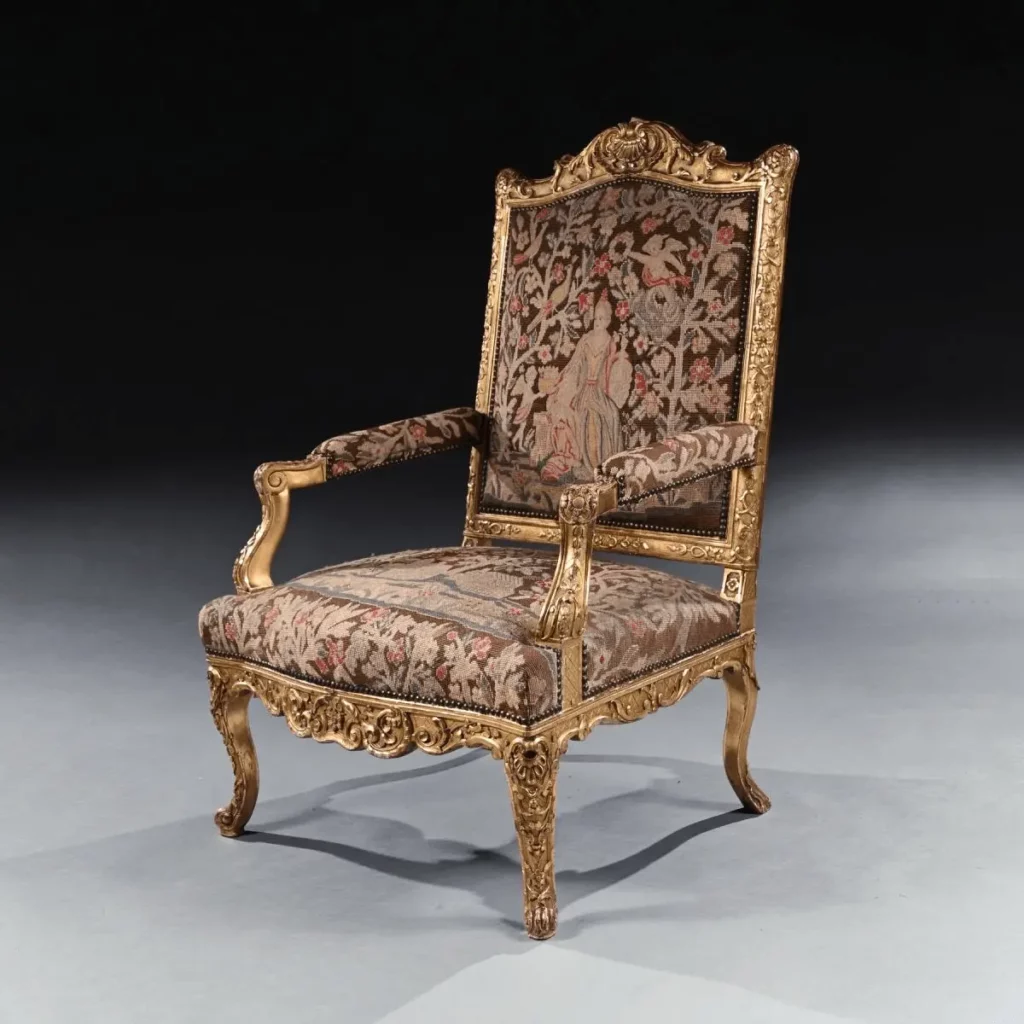
Marquises and emerging bergères adopt more intimate forms that celebrate conversation and the art of aristocratic relaxation.
Salon ensembles favor softened harmony and emerging modularity, creating reception furniture adapted to Parisian worldly uses.
Functional furniture: unnovation and refinement
Domestic revolution: The Régence style invents transitional specialized furniture that transforms the habitat into a theater of modern Parisian art of living.
This functional revolution reflects the accelerated evolution of social customs and the emergence of liberated Parisian aristocracy.
Transformable furniture multiplies, testifying to the adaptation of domestic space and new rituals of aristocratic privacy.
Lightened display furniture elegantly integrates precious objects into exceptional transitional decorative settings.
Tables: sculpting transitional elegance
The Régence table revolutionizes the art of table-making by favoring emerging decorative grace and lightened precious materials.

 Régence Console, gilded bronze and marble, circa 1720
Régence Console, gilded bronze and marble, circa 1720Storage: modern decorative architecture
The Régence style transforms storage furniture into decorative elements that simultaneously structure and embellish Parisian aristocratic space.
Bookcases adopt softened architectural compositions, often punctuated by lightened bronzes and transitional marquetry.
Night Furniture: aristocratic intimacy
The Régence style revolutionizes bedroom furniture by creating ensembles of new grace and sensuality.
The modern bed abandons monumentality to adopt more sculptural forms, often enhanced with lightened precious fabrics.
Night tables, chiffonnières and secretaries form coherent ensembles that transform the bedroom into a boudoir of aristocratic intimacy.
Lighting: sculpting new delicacy
The Régence style revolutionizes the art of lighting by creating luminaires that become true transitional decorative sculptures.
The creations of Jacques Caffieri, Philippe Caffieri and Pierre Gouthière transform artificial lighting into an emerging graceful spectacle.
The virtuosos of Régence style
The Régence style reveals an exceptional generation of creators who definitively revolutionize Western art and establish new transitional European aesthetic standards.
Charles Cressent: the master of transitional cabinetmaking
Charles Cressent (1685-1768) embodies the perfection of French cabinetmaking in transition and elevates the art of furniture toward its rococo evolution.
His genius lies in his ability to synthesize Louis XIV tradition and emerging rococo innovations in creations of unequaled transitional grace.
The Cressent workshop revolutionizes cabinetmaking by softening forms and develops new techniques that durably influence European art.
His creations for European aristocracy definitively establish French supremacy in the art of transitional luxury furniture.
Robert de Cotte: the architect of modernity
Robert de Cotte (1656-1735) revolutionizes architectural art by inventing transitional architecture, an aesthetic of revolutionary modernity.
His philosophy of “modern grandeur” profoundly influences European art of living and still inspires contemporary creators.
His collaborations with decorators create an architecture of unique functionality and decorative poetry.
Germain Boffrand: the architect of emerging Rococo
Germain Boffrand (1667-1754) transforms decoration into the art of emerging asymmetry and establishes France as a world reference in transitional decorative art.
“Ornament must be in just proportion with the figure and never smother it.”
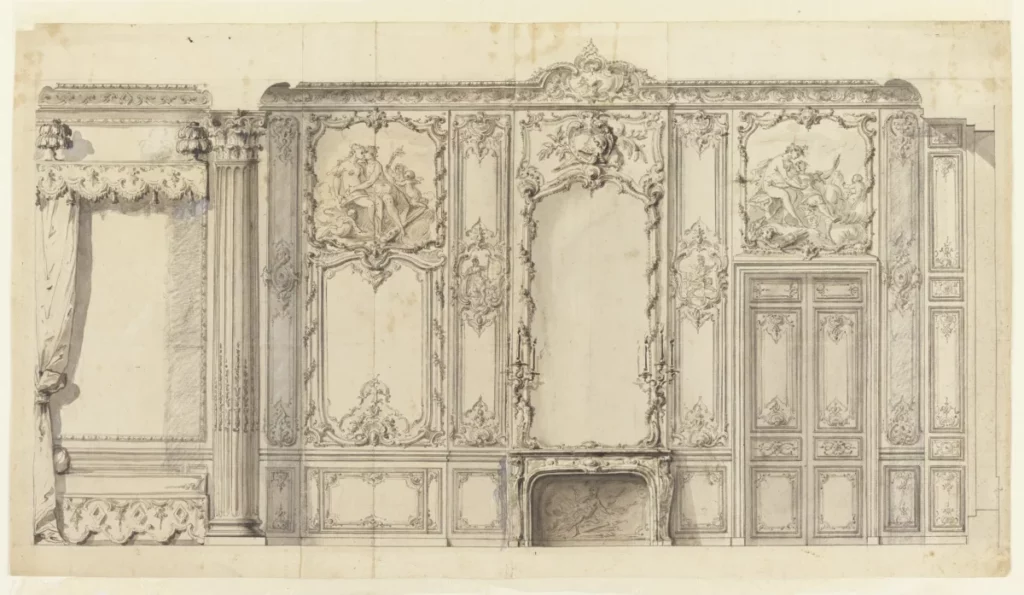
His ornamental innovations revolutionize decorative art and allow creations of new freedom and grace. European commissions spread French excellence across all continents and directly herald the rococo triumph.
The Masters of Decorative Arts
Claude III Audran revolutionizes the art of ornamentation by developing singerie techniques that transform decoration into poetic art.
His innovations (Chinese motifs, free arabesques) transform ornamentation into major art and influence all rococo evolution.
Jacques Caffieri develops an art of furniture bronze of transitional delicacy, while Thomas Germain explores the potentialities of modern silversmithing.
The Régence market: between rarity and transition
Iconic oieces and historical rarity
The Régence market reveals a particular segmentation between exceptional transitional masterpieces and documented period creations. This chronological rarity (only 8 years) confers on originals a status of major historical heritage.
The Collector’s Grails:
Authentically Régence pieces (1715-1723) reach heights at international auctions. Records concern transitional Cressent furniture and aristocratic commission objects.
Charles Cressent commodes from the Régence period trade between €300,000 and €1,500,000 depending on bronze quality and documented provenance. Pieces with ducal provenance regularly exceed €1,000,000.
Stamped Régence period seats range from €80,000 to €400,000, while documented salon sets can reach €800,000.
 Cressent commode Régence period, estimate €850,000
Cressent commode Régence period, estimate €850,000
French market: transitional heritage
Parisian Specialized Galleries:
Galerie Perrin (Saint-Germain): world reference for French furniture Régence period. Authenticated Cressent furniture: €400,000 to €1,200,000.
Galerie Steinitz (7th): specialist in Régence decorative arts. Transitional art objects: €20,000 to €300,000 depending on pieces.
Galerie Aveline: expert in period Régence furniture. Régence period seats: €60,000 to €350,000.
French Secondary Market:
Artcurial, Christie’s and Sotheby’s Paris sales reveal a French market passionate about this pivotal period.
Tajan: thematic “Régence Furniture” sales with pieces starting at €15,000.
Osenat (Fontainebleau): Régence discoveries between €8,000 and €150,000.
International market: fascination for transition
Europe – Transitional Influence:
London maintains a connoisseur market for French Régence furniture.
Bonhams and Sotheby’s London: specialized expertise Régence period.
London Price Ranges:
- Stamped Régence armchair: £25,000 to £120,000
- Transitional period commode: £80,000 to £400,000
- Period Chantilly porcelain: £5,000 to £80,000
United States – Enlightened Collectors:
New York concentrates specialized collections of French art Régence period.
Christie’s and Sotheby’s NYC: records for Régence Cressent pieces.
European market: transitional taste
Germany and Austria – Princely Collections:
Munich and Vienna preserve important collections of French art Régence period.
German Market:
- French Régence furniture: €40,000 to €300,000
- Caffieri furniture bronzes: €25,000 to €150,000
- Transitional tapestries: €30,000 to €200,000
Italian Market:
- Régence French influence: inspired Italian furniture: €20,000 to €120,000
Reproductions and contemporary market
Specialized Workshops:
Ateliers d’Art de France maintains certain Régence cabinetmaking traditions with contemporary creations of transitional inspiration.
Contemporary Artisans:
Atelier Hervé Gicquel: faithful reproduction of Régence furniture. Cressent-style commode: €35,000 to €85,000.
Ébénisterie Rousseau: specialist in transitional techniques. Régence-style seats: €15,000 to €45,000.
Style Market:
Quality 19th century reproductions (Second Empire period) trade for €5,000 to €35,000 depending on execution.
Contemporary copies range from €2,500 to €18,000 but without heritage value.
Expertise and authentication
Authenticity Criteria:
Transitional techniques are crucial: evolving Cressent marquetry, Caffieri first manner bronzes, traditional assemblies.
Period woods reveal authenticity: rosewood, palisander, ebony used with new parsimony.
Transitional bronzes are distinguished by their refined chasing and evolving mercury gilding.
Specialized Expertise:
Institut National du Patrimoine: specialized training in French furniture Régence period.
Approved experts near the Paris Court of Appeal: certification for major transitional pieces.
Investment and capital gains
Price Evolution (2010-2024):
Authentic Régence pieces have seen their value multiplied by 2 to 5 in fifteen years.
Cressent commode Régence period: €400,000 in 2010, €950,000 in 2024.
Stamped Régence armchair: €35,000 in 2010, €85,000 in 2024.
Investment Criteria:
Authentic period: pieces dated 1715-1723 systematically outperform.
Transitional quality: evolving marquetry and bronzes multiply value.
Historical documentation: aristocratic provenance better preserves value.
2025-2030 Outlook:
Experts anticipate continued growth due to absolute chronological rarity.
Demand from specialized collectors could revive certain segments.
Régence art objects still offer significant appreciation potential.
 Evolution of the Régence market 2010-2024
Evolution of the Régence market 2010-2024
Régence today: a specialized heritage
Limited influence on contemporary design
The Régence style, due to its historical brevity and transitional character, exerts a more discreet influence than other French styles on contemporary creation.
A few specialized creators (Jacques Garcia, François-Joseph Graf) occasionally draw from this heritage for exceptional projects, favoring transitional spirit over literal reproduction.
This influence remains very limited to enlightened amateurs and specific heritage projects.
Ultra-Specialized Restoration: Rare Expertise
Restoration of Régence furniture mobilizes ultra-specialized artisans in this pivotal period:
Specialized cabinetmaker-restorers: Master Cressent transitional techniques, specialized INMA training.
Expert bronze-makers: Specialists in Caffieri first manner bronzes. Workshops: Fonderie Coubertin, Maison Baguès.
Average cost: €20,000 to €80,000 depending on complexity. Lead times: 8 months to 2 years for major pieces.
What Decorative Movement Followed Régence?
After the Régence style (1715-1723), evolution leads directly to:
Styles that directly succeeded Régence:
1. Louis XV First Manner (1723-1730) 🇫🇷
Country: France (rococo development)
Characteristics: Flourishing curves, assertive rococo, brilliant gilding
Figures: Mature Charles Cressent, young Jean-François Oeben, Jacques Dubois
2. International Rococo (1720-1760) 🇪🇺
Country: Europe (French diffusion)
Characteristics: Adoption of French rococo codes, national variations
Figures: François Cuvilliés, Bartolomeo Rastrelli, Johann Zimmermann
3. George I Style (1714-1727) 🇬🇧
Country: England (British parallel)
Characteristics: Moderate French influence, maintenance of Queen Anne style
Figures: William Kent, young Thomas Chippendale, Grinling Gibbons
4. Early Gustav III Style (1720-1740) 🇸🇪
Country: Sweden (French influence)
Characteristics: Adoption of French rococo, Scandinavian interpretation
Figures: Carl Hårleman, Jean Éric Rehn, Carl Johan Cronstedt
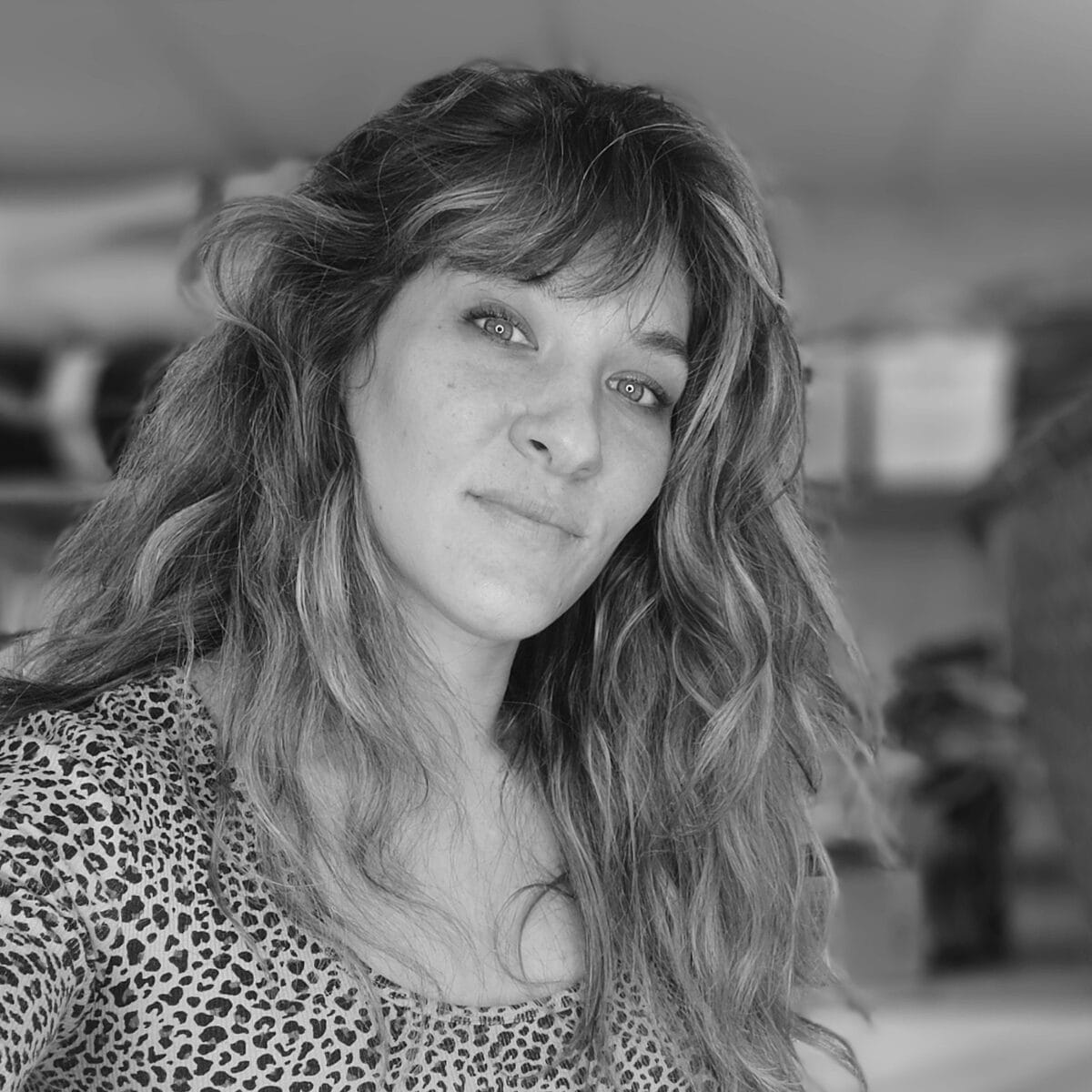
Digital entrepreneur and craft artisan, I use my unconventional background to share my vision of luxury design and interior decoration — one enriched by craftsmanship, history, and contemporary creation. Since 2012, I have been working daily in my workshop on the shores of Lake Annecy, creating bespoke interiors for discerning decorators and private clients.
